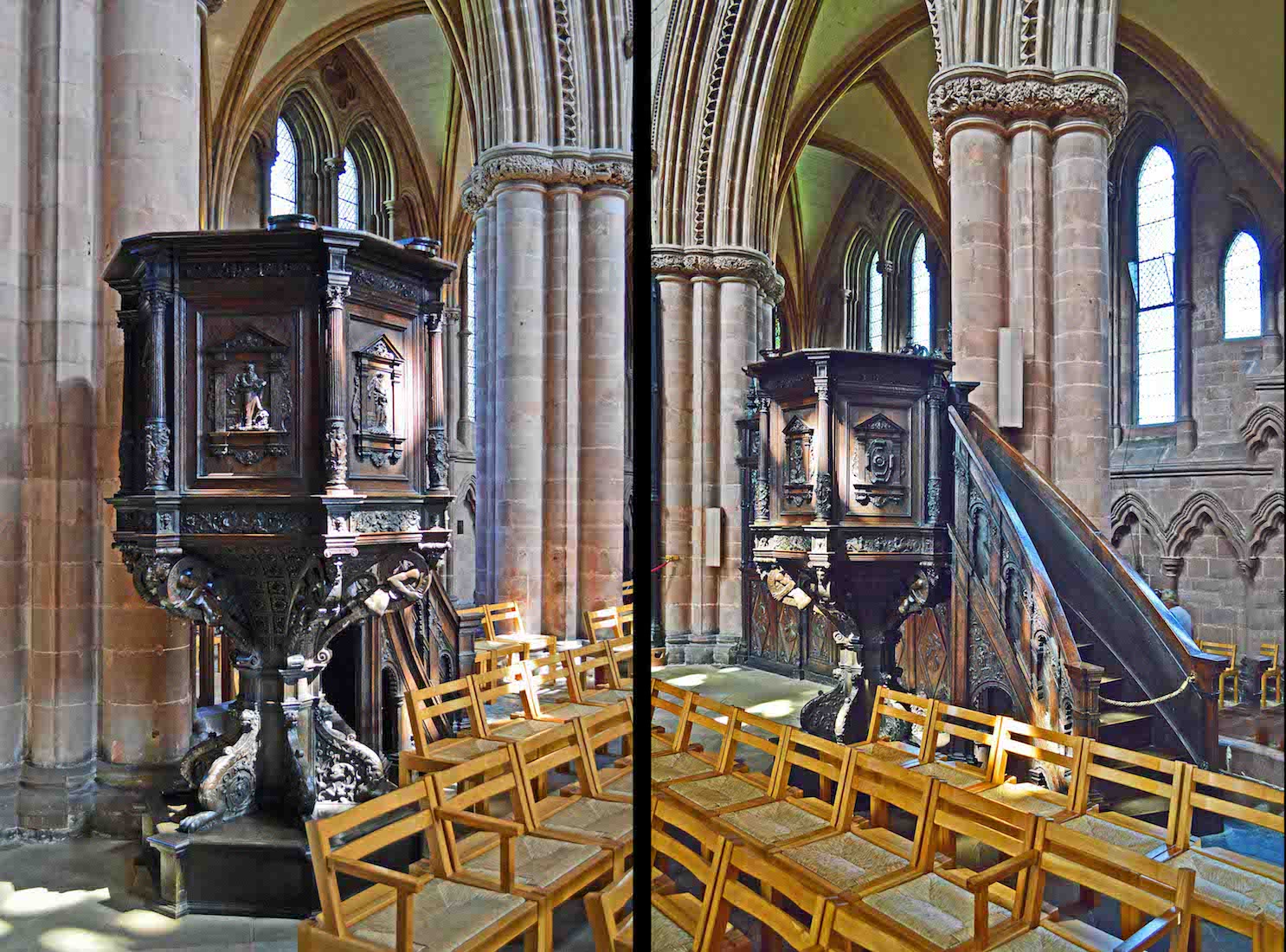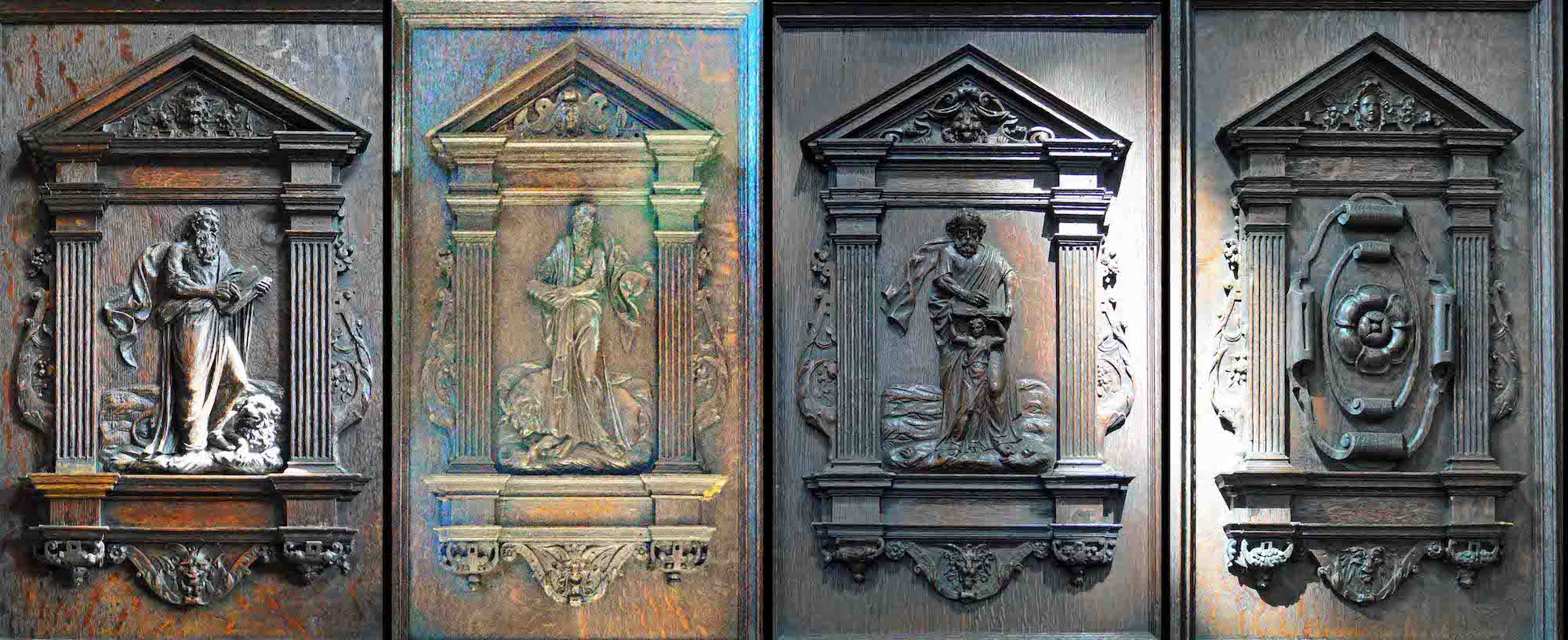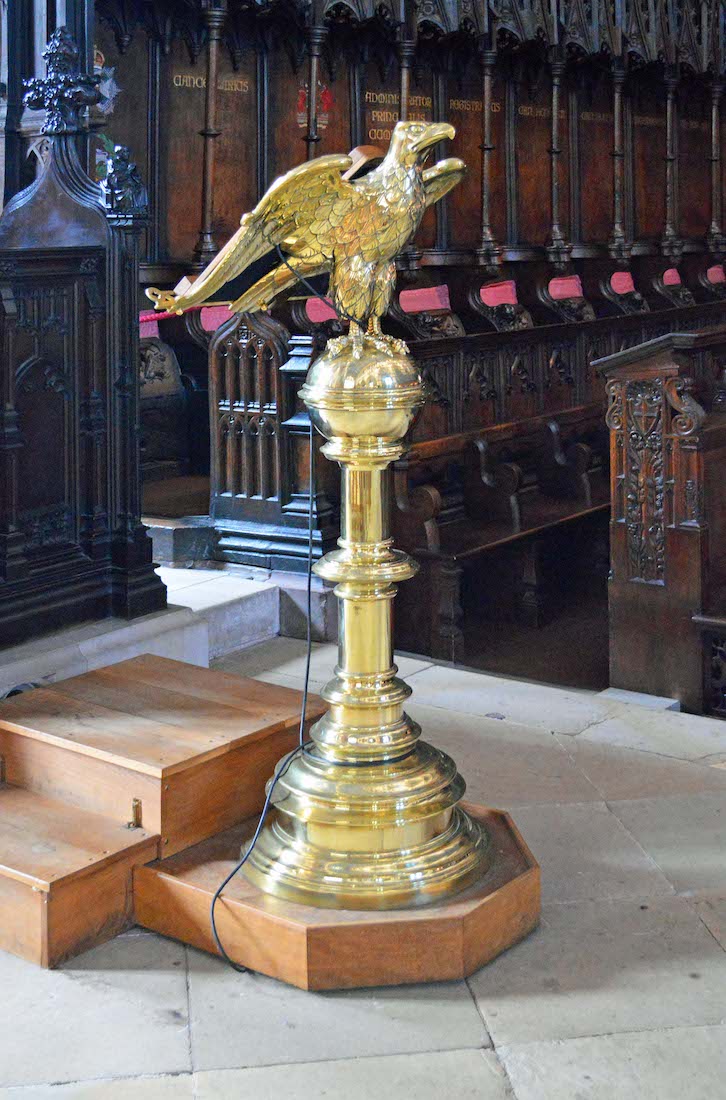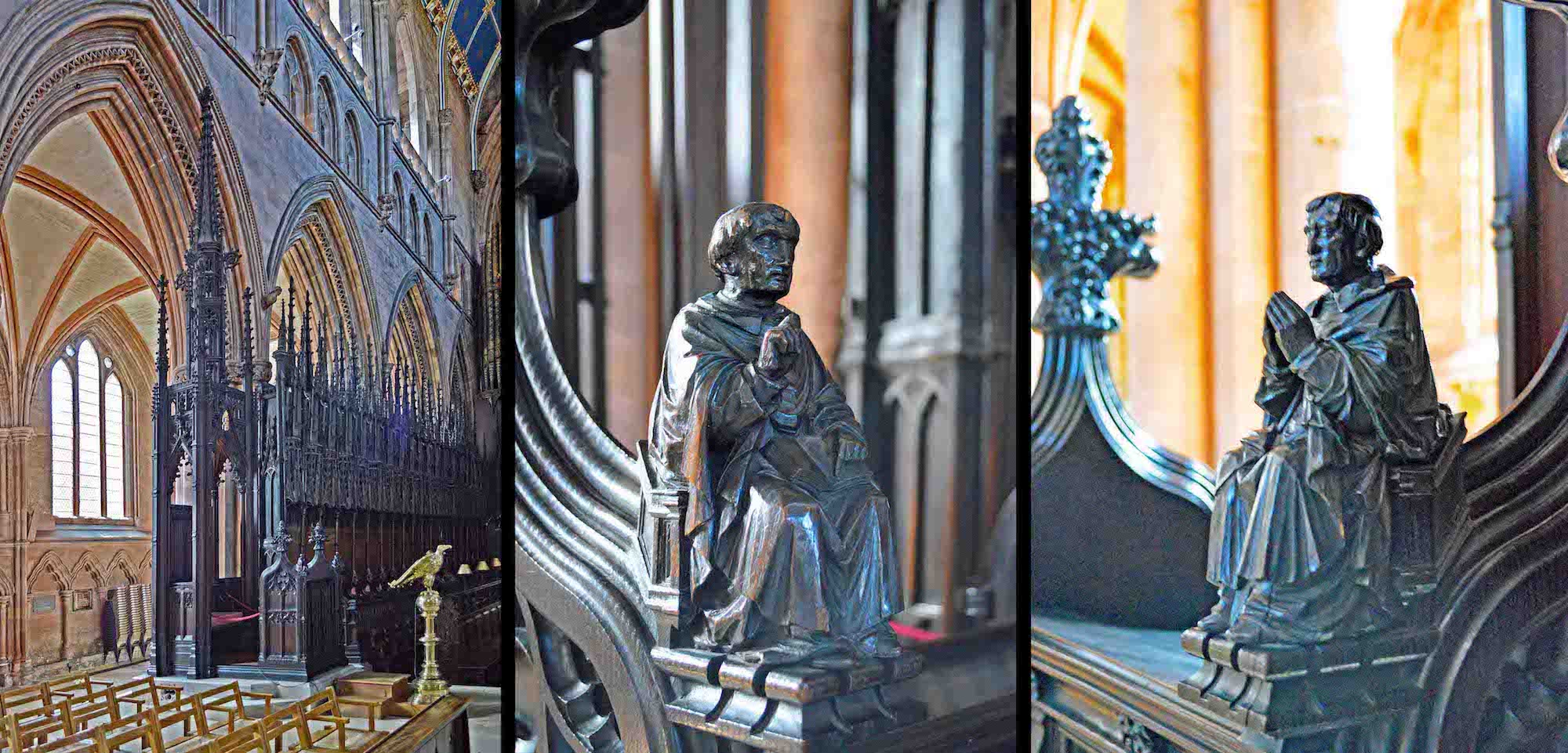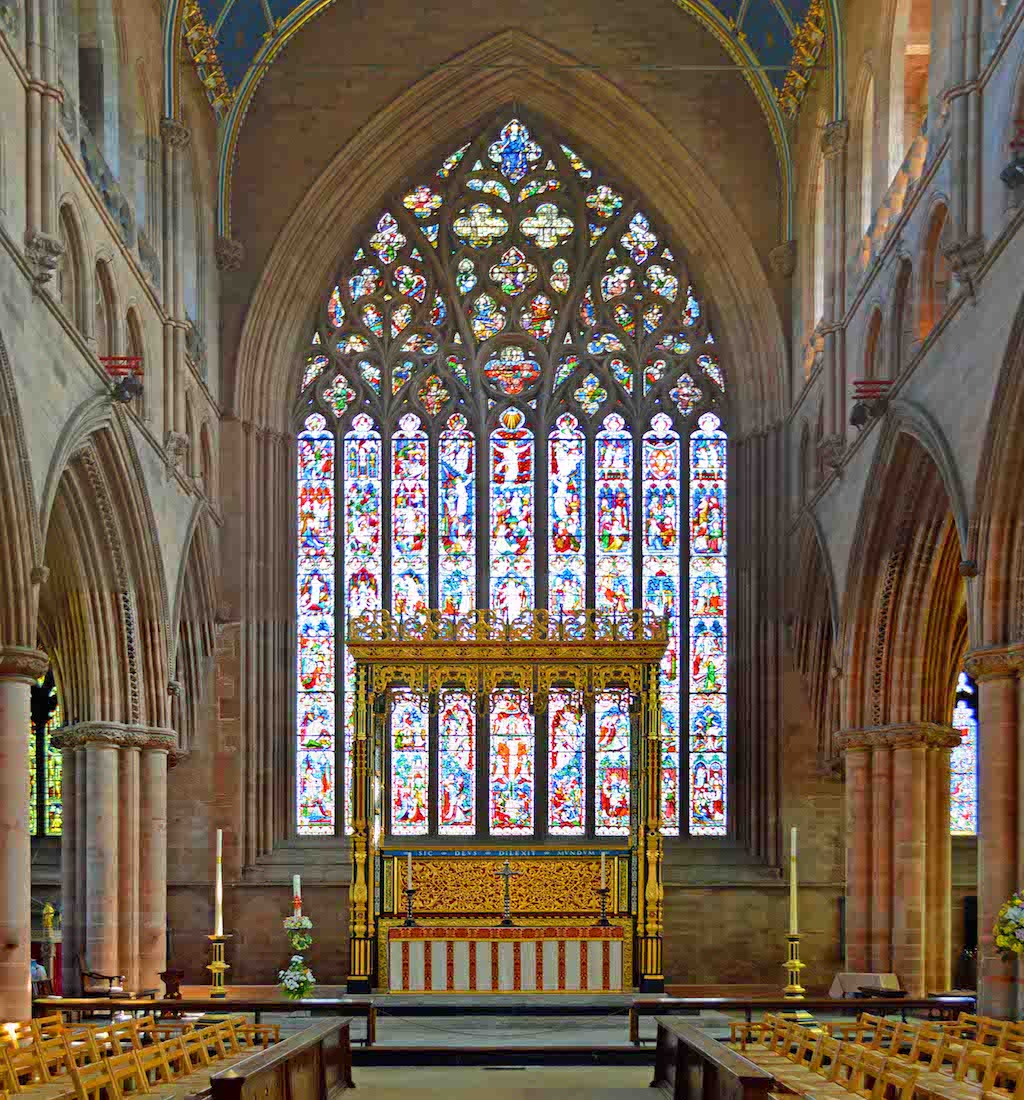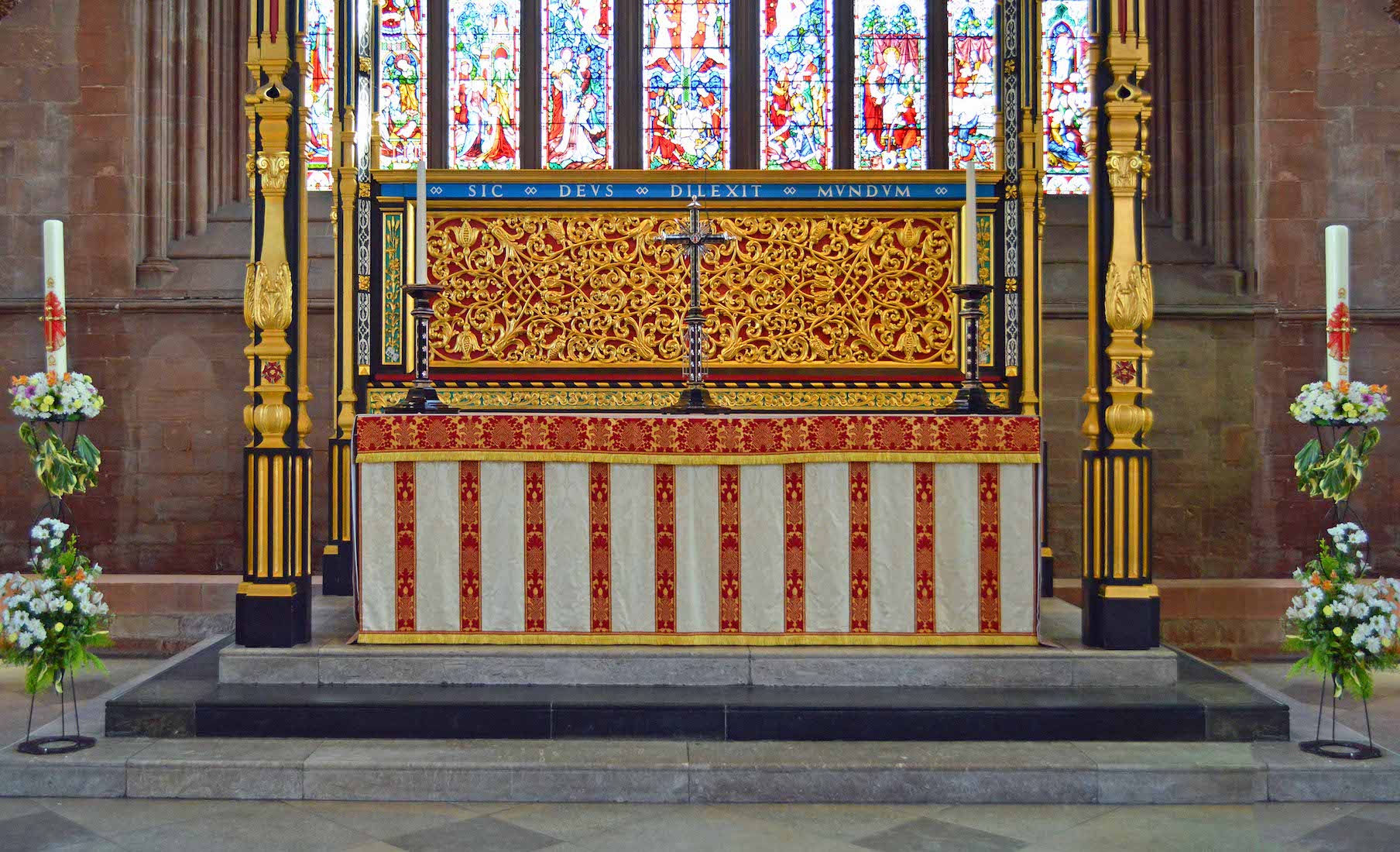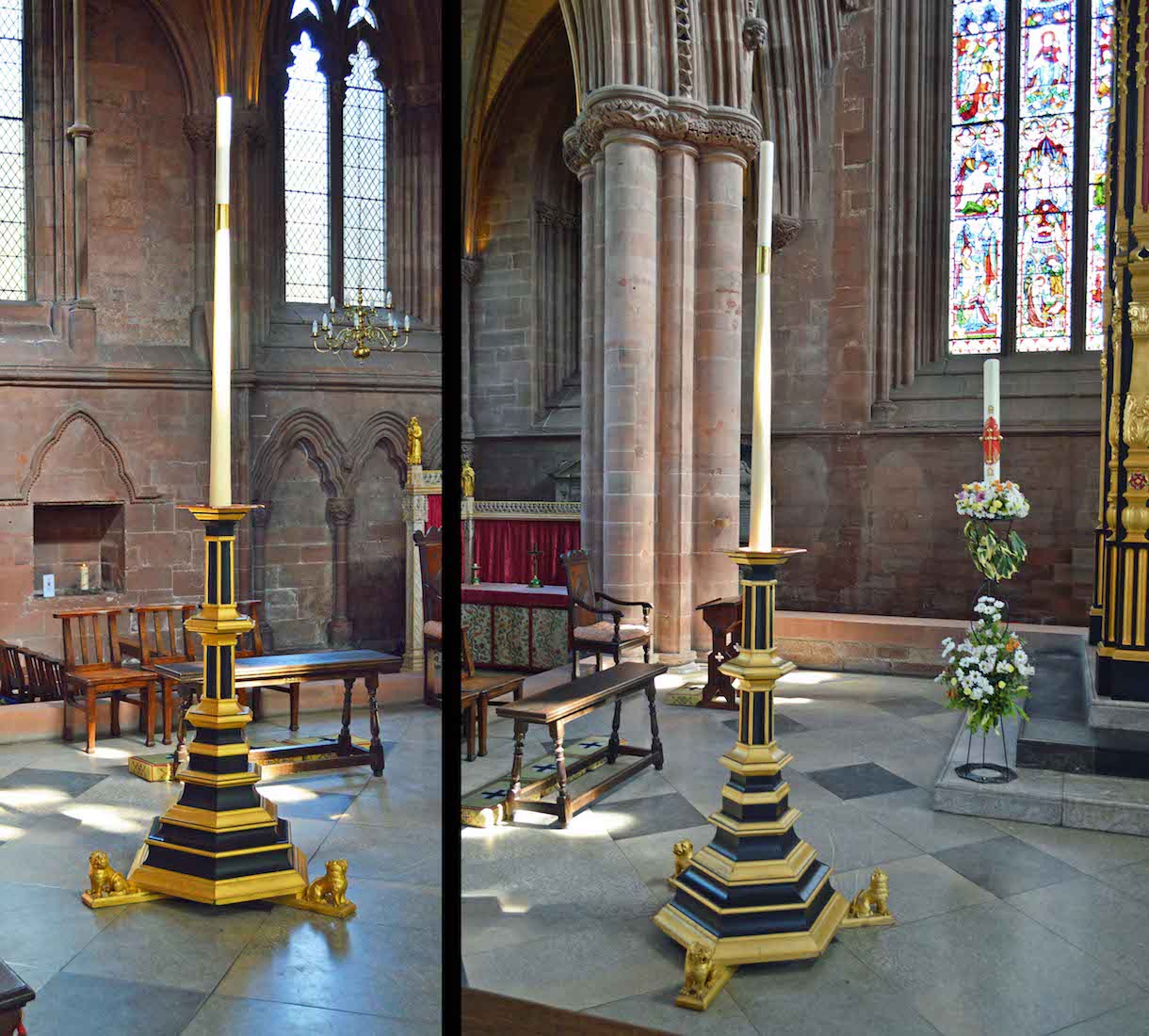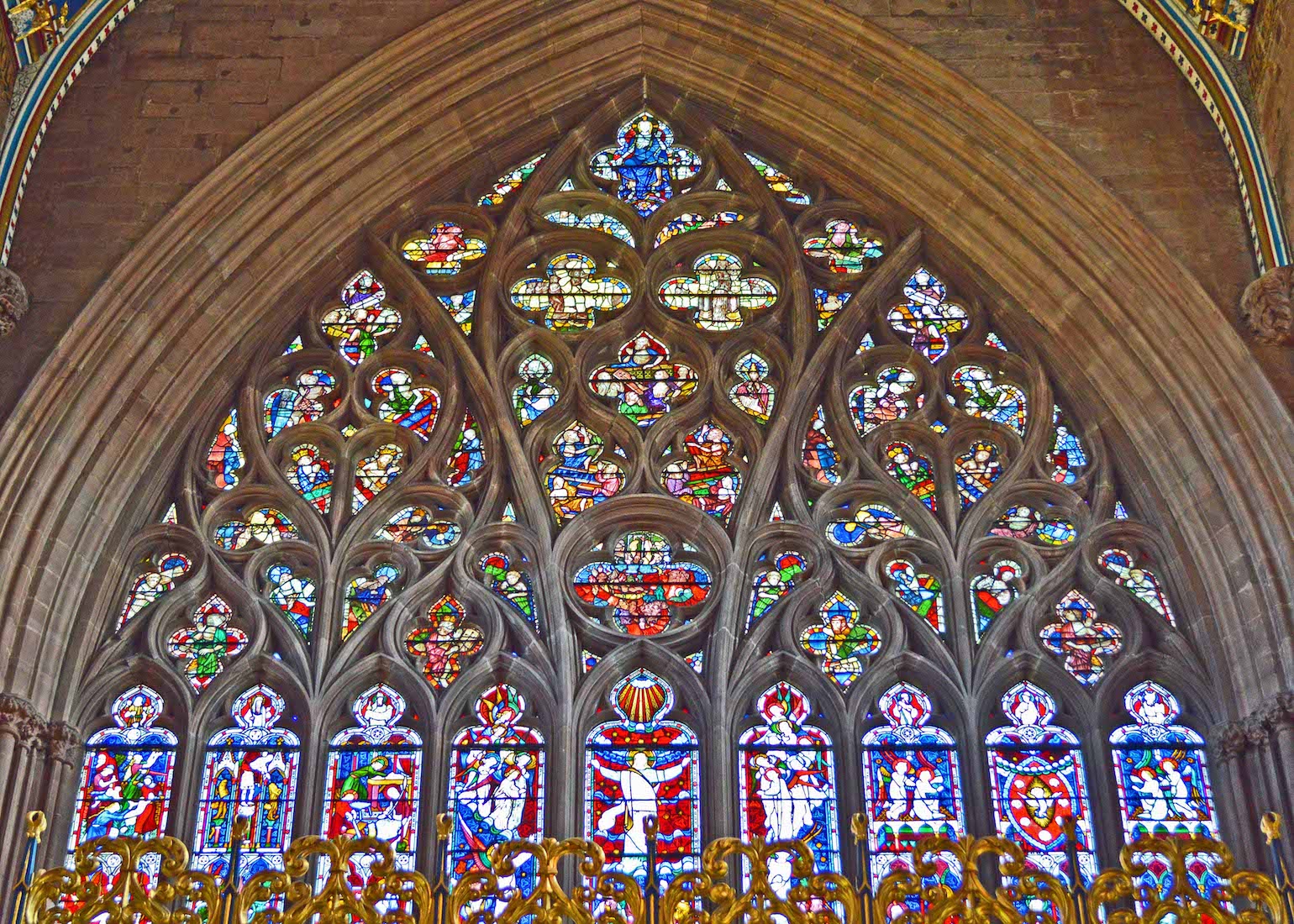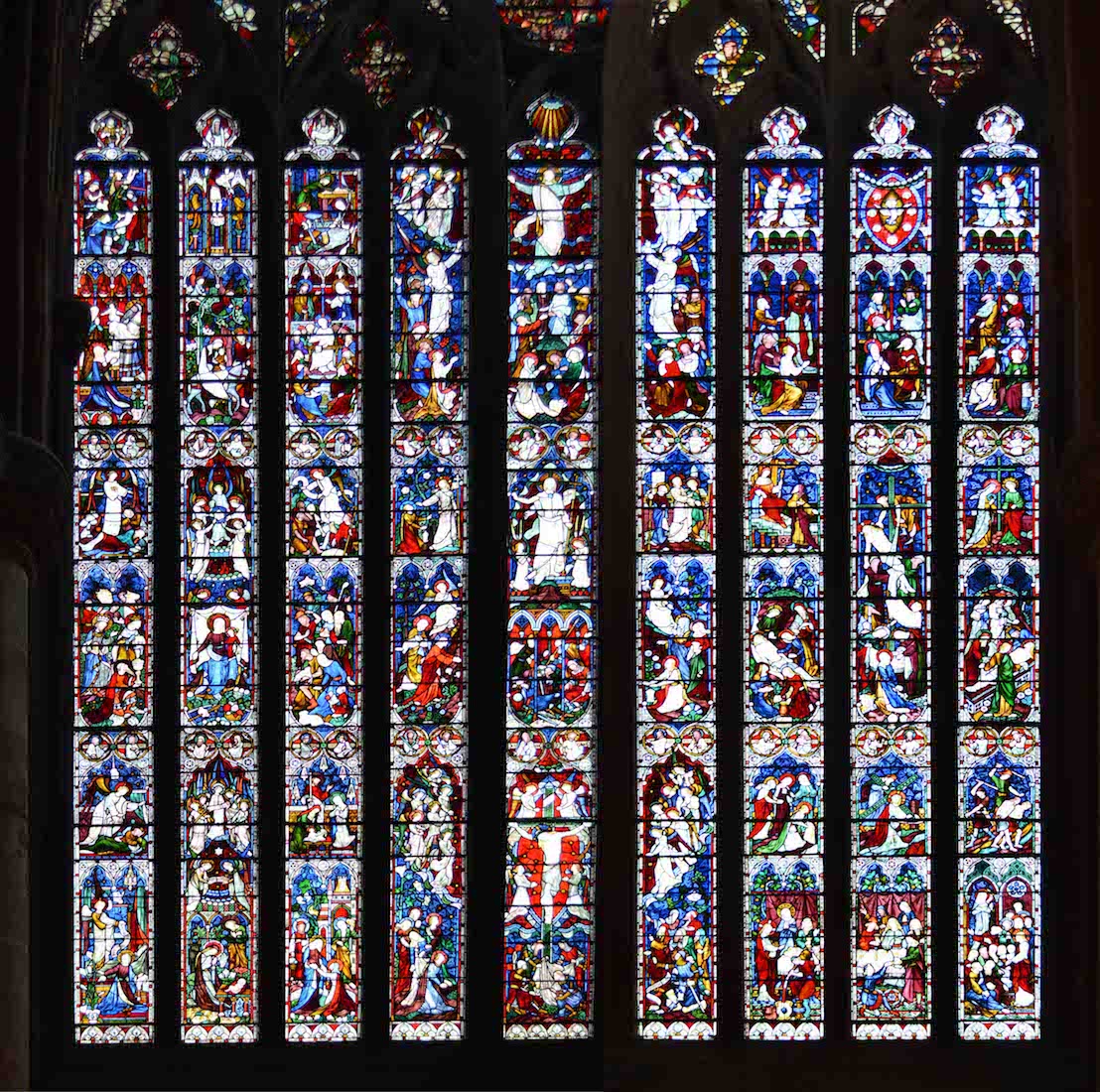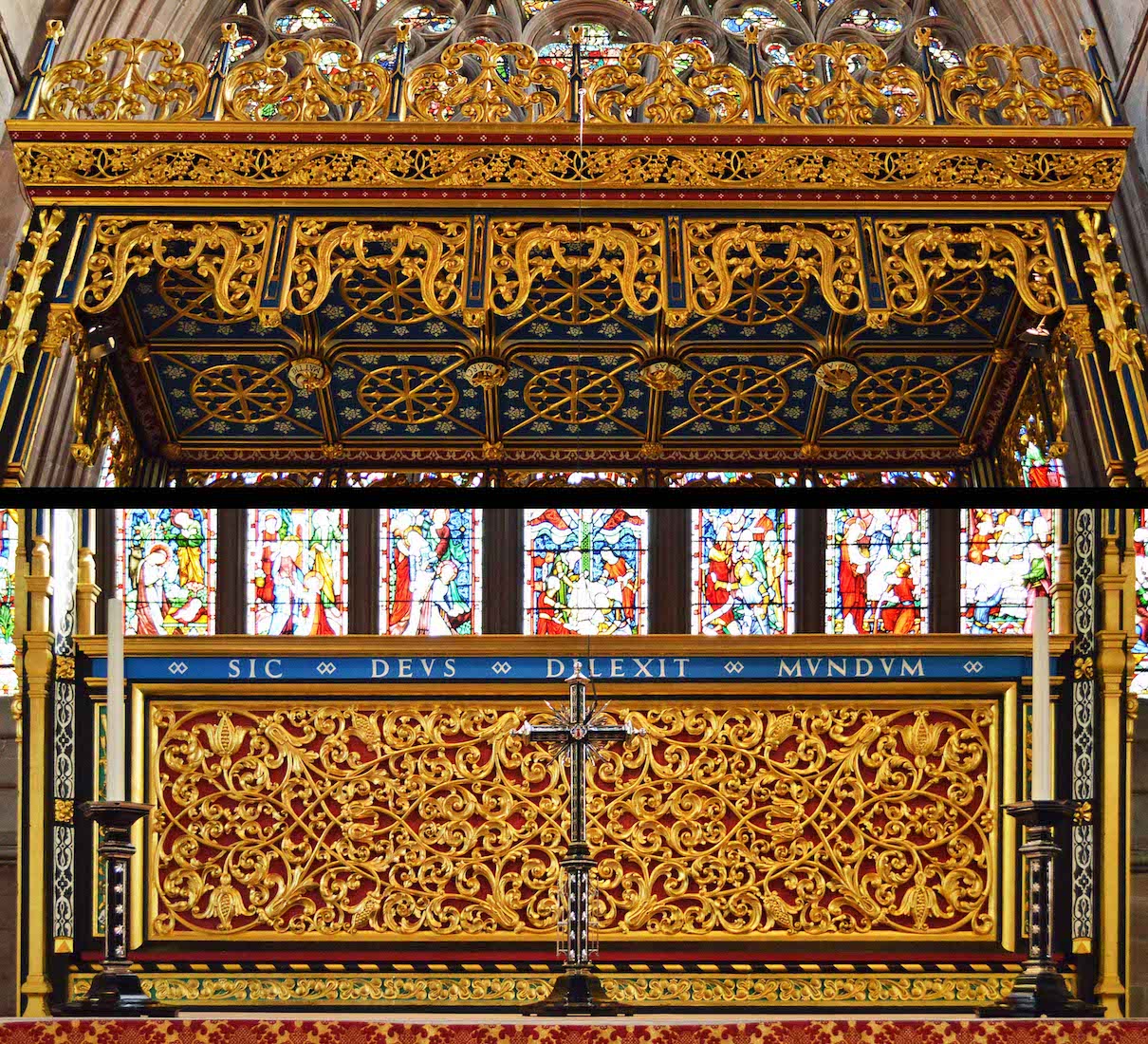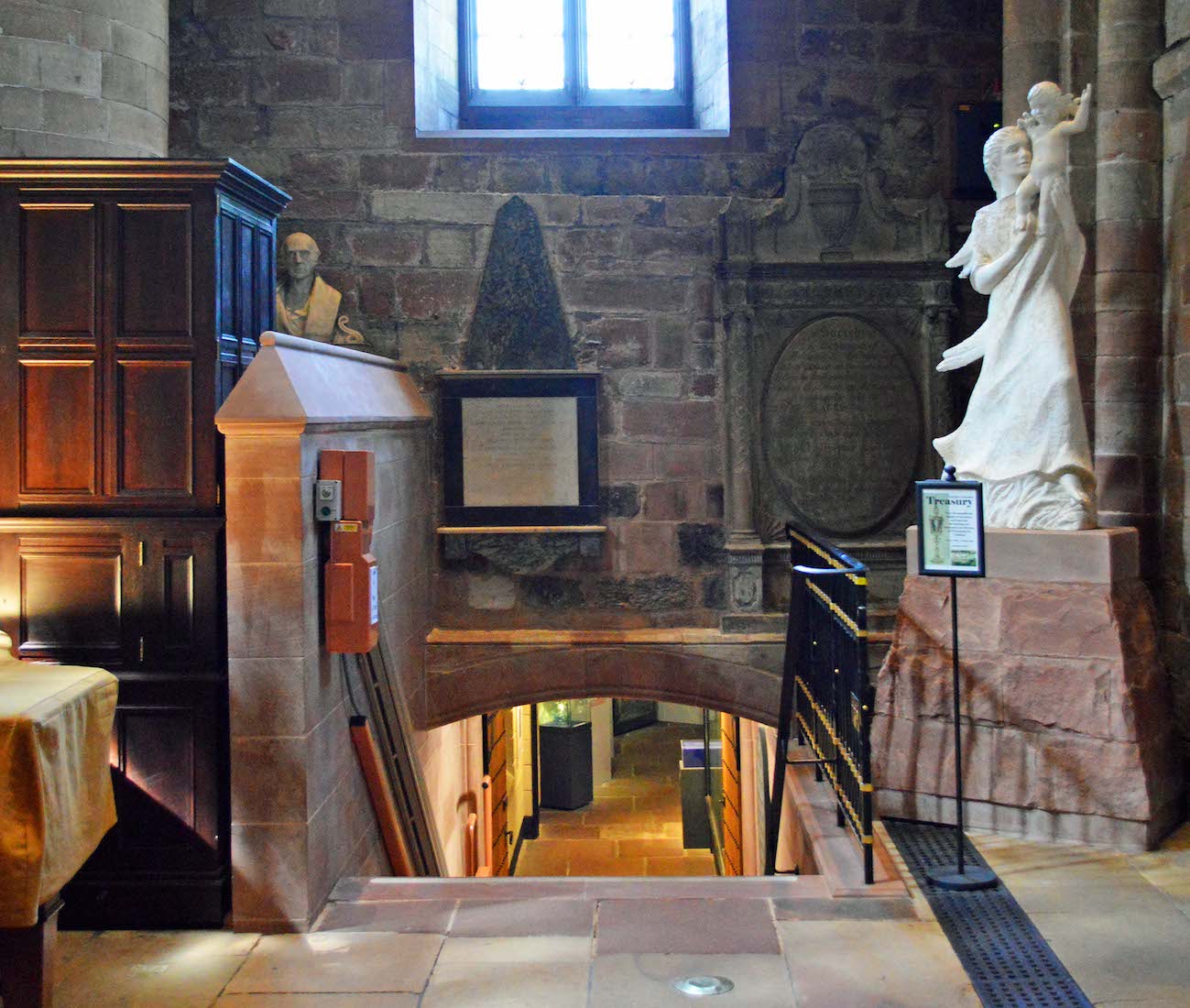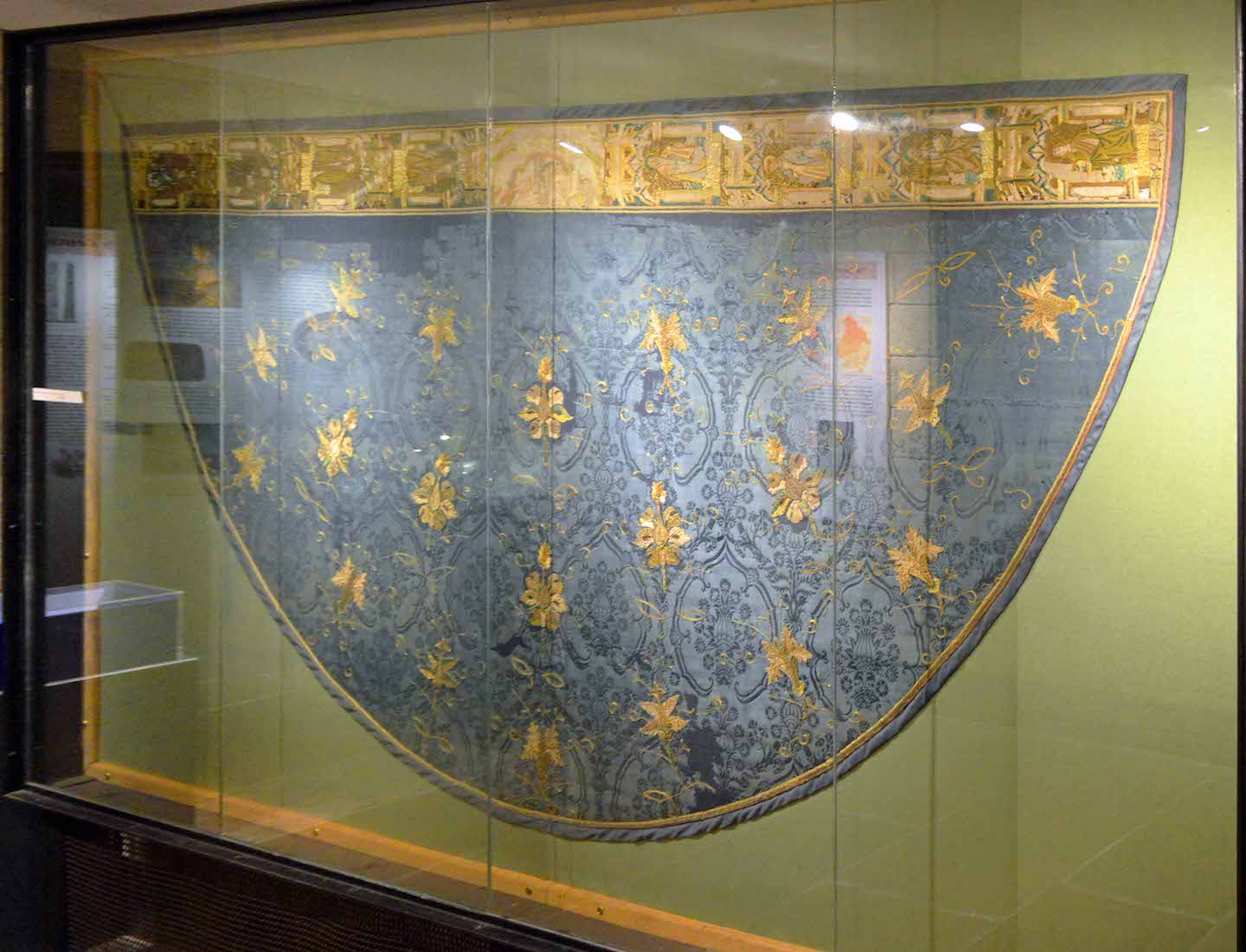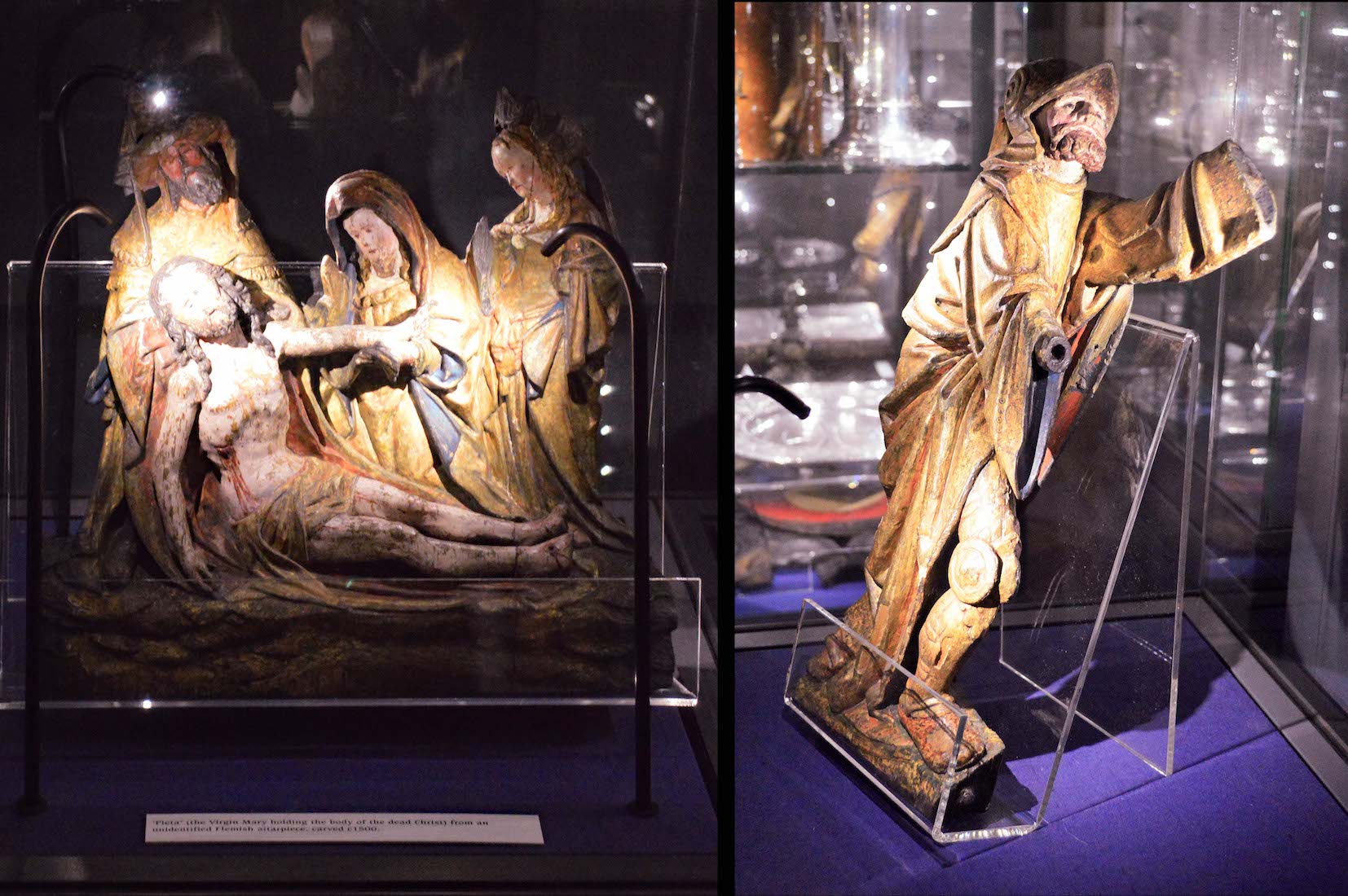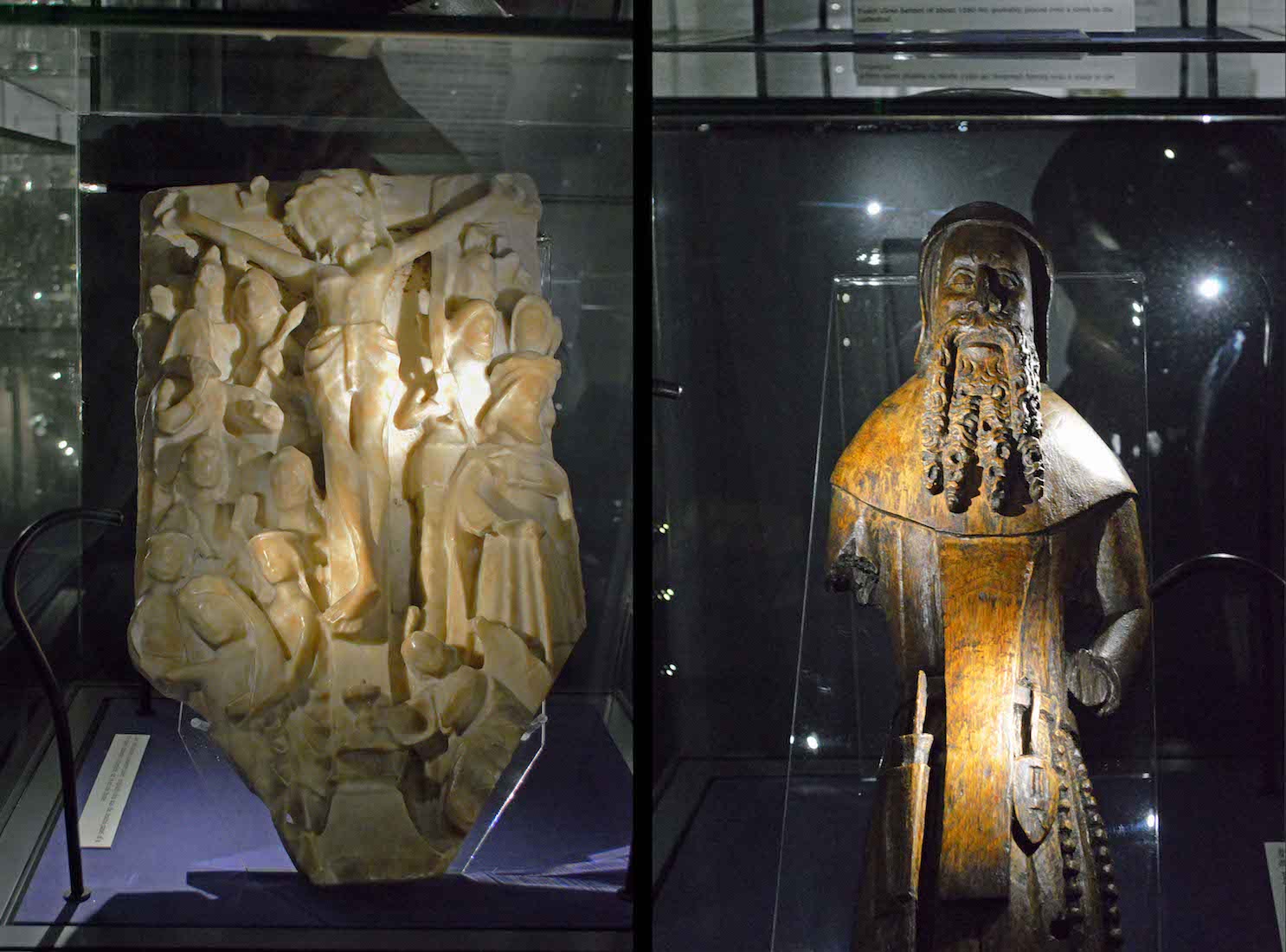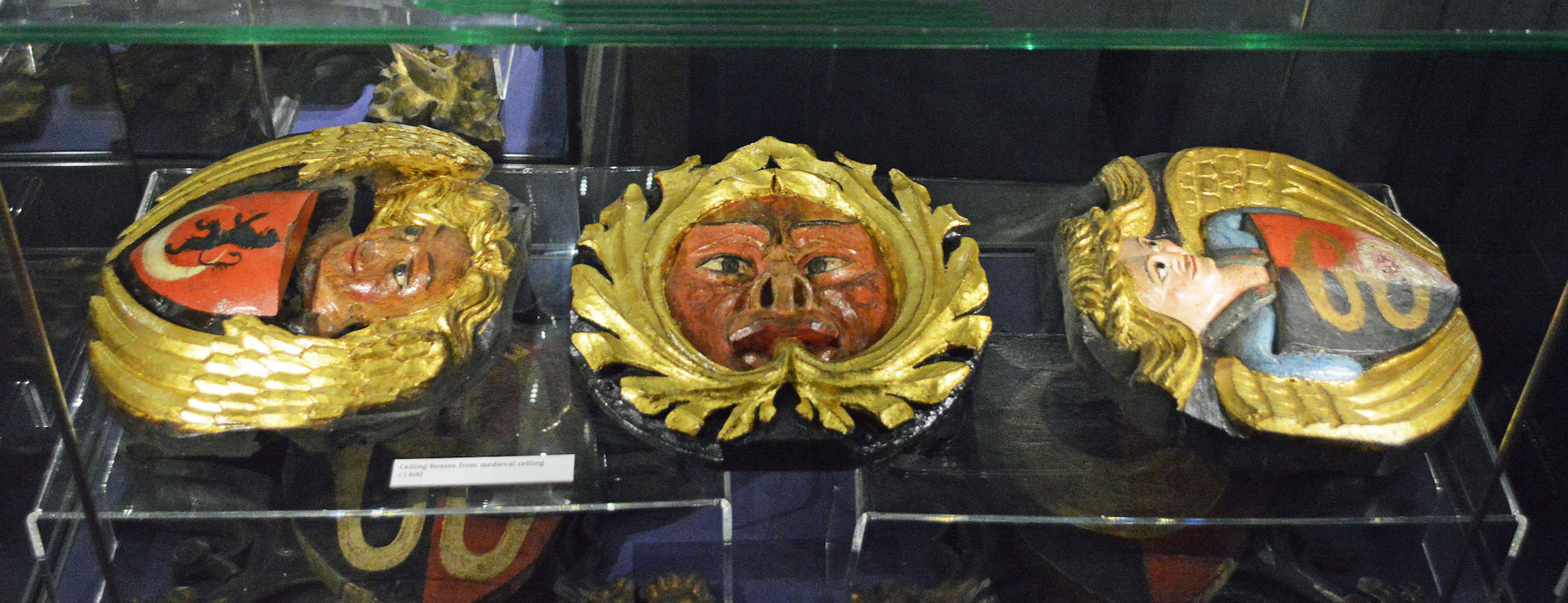
The fortysix choir stalls each incorporates a misericord, which is a tip-up seat which enables a Canon at worship to stand or sit or perch in a position that was good for singing. Typically they incorporate ornate carvings on their underside, with designs which are usually not religious, except for an occasional angel. The designs often incorporate mythical beasts, birds or animals. These misericords and choir stalls date from the period 1400 to 1419. Exposed to daylight in the course of repair they were found to have a thin wash of gold paint. PLAN
62. DECORATED CHOIR STALLS
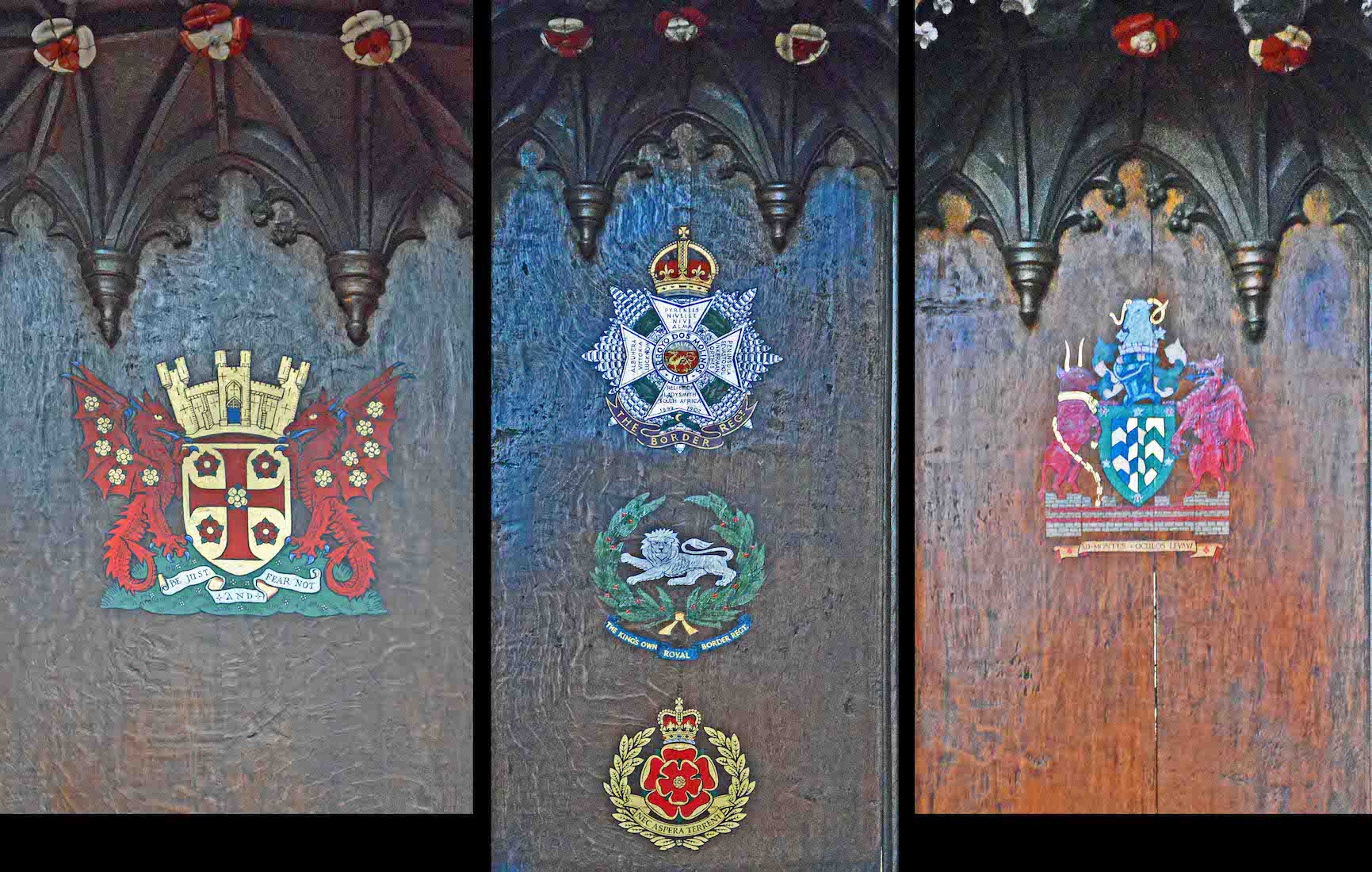
Several of the stalls in the choir have painted decorations on the back. The stall at left shows the emblem of Carlisle City. The motto is ‘Be just and fear not.’ The middle stall shows arms and emblems of The Border Regiment. The stall at right shows the coat of arms of the county of Cumbria. The motto translates to: I shall lift my eyes unto the hills.
63. PULPIT
The pulpit was originally from the Church of St Andrew’s, Antwerp, and is dated 1559. It was brought to Carlisle Cathedral from Cockayne Hatley in memory of Dean Mayne. Four frames depict figures of the evangelists, Matthew, Mark, Luke and John; the fifth ornamental roses.
64. PULPIT DETAILS
Pictured here are three of the evangelists displayed on the pulpit, and the rose panel. I suspect poor St John is facing the pillar! The evangelists are identified by their traditional symbols. From left: • Mark (a lion), • Luke (an ox), • Matthew (an angel or man), and (not shown), John (an eagle). The rose is the national flower of England. It has been adopted as England’s emblem since the time of the Wars of the Roses – civil wars (1455-1485) between the royal house of Lancaster (whose emblem was a red rose) and the royal house of York (whose emblem was a white rose).
65. PULPIT SUPPORT
The pulpit is supported by several interesting carved figures. The horizontal strip at the base of the panels also has some decorative carving.
66. THE LECTERN
The lectern – a traditional brass eagle – was given in memory of the late G.C. Mounsey, sometime diocesan registrar. It is from here that the Scripture is read.
67. CATHEDRA
The throne or seat – ‘cathedra’ – of the Bishop in any Cathedral is the feature that gives the building its name. The present throne on the South side of the choir adjacent to the stalls – the style of which it imitates, was designed by the architect G E Street, and was installed in 1880 in the same position as earlier ones. It is decorated with the coat of arms of Bishop Harvey Goodwin (1869 – 91). The canopy of the throne is nearly thirty feet high.
68. CHOIR CEILING 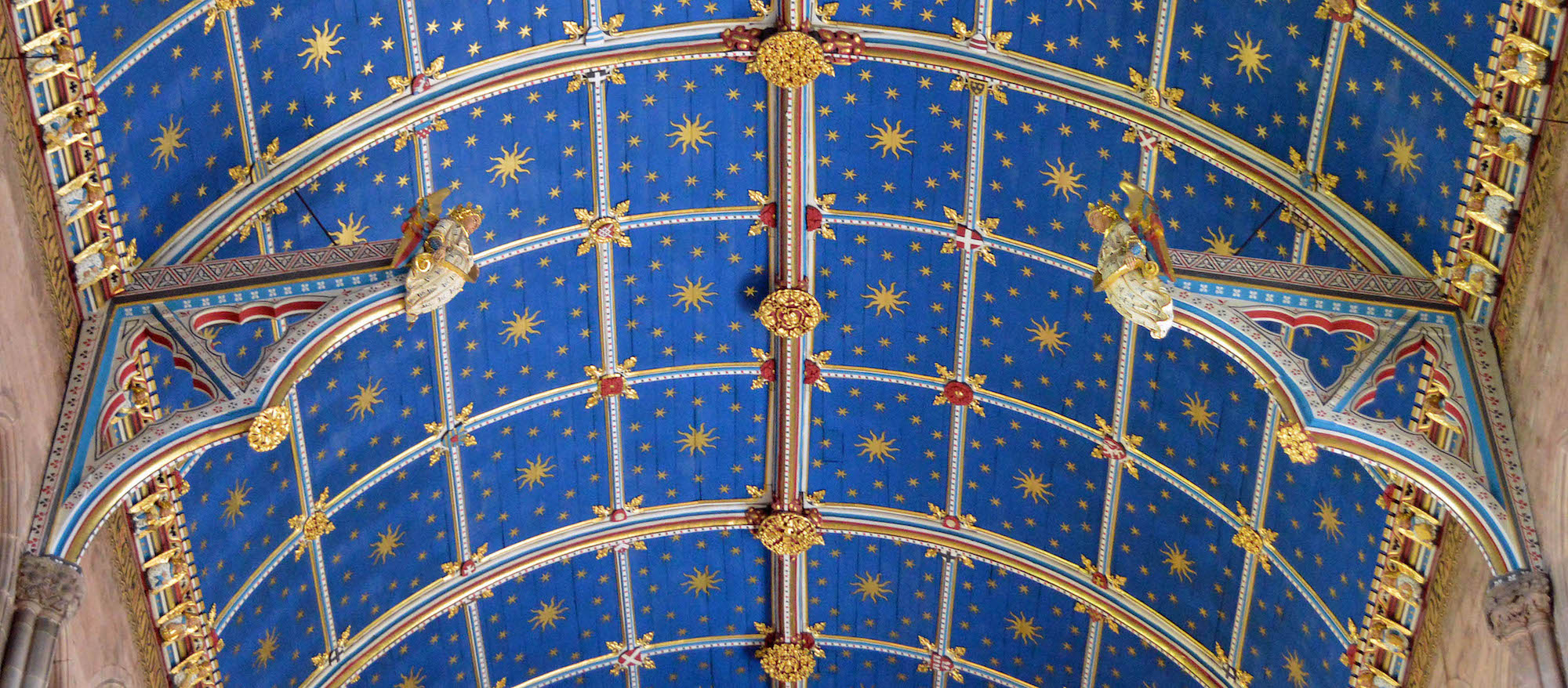
The main timbers of the ceiling date from 1400, which was part of the rebuilding of the choir throughout the fourteenth century after the fire of 1292. The decorative scheme dates from Ewan Christian’s restoration of the Cathedral 1853-6. The style we see of the restoration followed the medieval original, but the detailed design and colour of the ceiling with the angels and stars was the work of Owen Jones (1809 - 1874), who was one of the great decorative artists of the day. It was last repainted in 1970.
70. THE HIGH ALTAR AND REREDOS
The altar, baldacchino and reredos were installed in 1936. Across the top of the reredos is the Latin for ‘For God so loved the world’.
71. ALTAR CANDLES
Candles are very much part of the decoration of cathedrals. As providers of light they are symbolic of Christ being the Light of the World, and this is particularly true of the Paschal candle. However, their prevalence in modern cathedrals is probably historical: they were originally simply there to give light, and they have stayed.
72. UPPER EAST WINDOW
The most significant architectural feature of Carlisle Cathedral is its East Window. This window in decorated style dates from about 1350, as part of the rebuilding of the Cathedral after the fire of 1292. It is 51 feet high and 26 feet wide and has been attributed to Ivo de Raughton. Much of the original stained glass survives in the very fine tracery in the upper part of the window, depicting the last judgement of Christ. The tracery of this window is in the most complex of English Gothic styles, Flowing Decorated Gothic, which, it has been calculated, was drafted from 263 points.
73. LOWER EAST WINDOW
The lower part of the window, having nine lights depicting the life of Christ, is the work of Hardman and Co. It dates from 1861, and is in memory of Bishop Hugh Percy. This window is the largest and most complex of its type in England.
74. REREDOS AND CANOPY
The reredos and the delicate gilt canopy over the high altar were designed by Sir Charles Nicholson (1867-1949). The filigree baldacchino is intricate enough to look rich and grand, but light enough not to obscure the East window. Sir Charles Nicholson was the brother of the stained glass artist A. K. Nicholson, whose own work can be seen in the Easternmost window of the South choir aisle.
75. TO THE TREASURY
We leave the sanctuary and return to the Treasury at the West end. The excavation of the area beyond the West wall in 1988 was an important archaeological dig, and exposed several Viking graves. The Treasury was then placed underground there. The Treasury Exhibition was opened by the Duke of Gloucester with the aim of safeguarding and displaying the ‘treasures’ of the parishes of the diocese and of the Cathedral. Additions to the collection continue to be made.
76. TREASURY COPE
As we enter the Treasury, on the wall there is a fine blue medieval cope of 1440 with embroidered panels (orphreys), which was in use until the 1980s. We record just a few of the items on display here.
77. PIETÀ
This Pietà – the Virgin Mary holding the body of the dead Christ – comes from an unidentified Flemish altarpiece, carved c1500. At right is a damaged rugged male figure of unknown identity. The Treasury also contains a series of illustrated panels which tell the story of the history of Christianity in Cumbria from the beginning to the present day.
78. THE RENWICK BELL
This medieval bell is on loan to the Treasury from All Saints Church, Renwick. The bell was replaced in that church in 1893, and had been stored there thereafter at ground level. It is the larger of two medieval bells belonging to the church. It is thought that the bell may have been made by John of Kirkham who is recorded as a bell-founder in York in 1371. The use of 23 letters of the alphabet around the shoulders of the bell in Lombardic capitals is a not uncommon form of decoration.
79. CRUCIFIXION
At left is a carved crucifixion scene, and at right a damaged and again unknown male figure. The Treasury houses a permanent display of items recovered from the excavations in 1988, as well as cabinets of church plate and chalices.
80. MEDIEVAL CEILING BOSSES
These three medieval ceiling bosses date from c1400. The richly coloured bosses were once part of a medieval ceiling – presumably in the Cathedral itself. The bosses are decorated with intricately detailed foliage, faces and heraldic shields and would have been used as ornamentation to conceal the joins found in a vaulted ceiling.

CONCLUSION
I hope you enjpyed visiting Carlisle Cathedral with me. It is an unusual Cathedral wit an interesting history.
I am happy to receive constructive comments or corrections concerning this website. The best websites are the ones which have no errors! I am grateful to my wife Margie who has proof-read these pages.
The photographs are nearly all mine; photographs taken by others are acknowledged. On the other hand, I have drawn the text for this site from many sources, and claim no credit! I have found the following sites particulayrl useful:
Carlisle Cathedral:
https://www.carlislecathedral.org.uk/
Wikipedia:
https://en.wikipedia.org/wiki/Carlisle_Cathedral
Bell’s Cathedrals:
http://www.gutenberg.org/files/19881/19881-h/19881-h.htm
My photographs which appear on this site can also be found in higher resolution at:
https://www.flickr.com/photos/paulscottinfo/sets/
Paul Scott Site created 06 / 2018 Reformatted 03 / 2020

